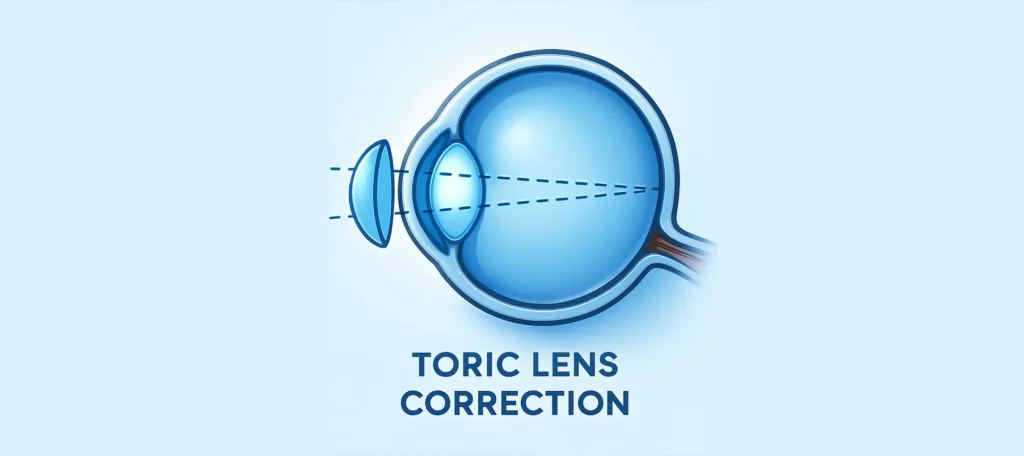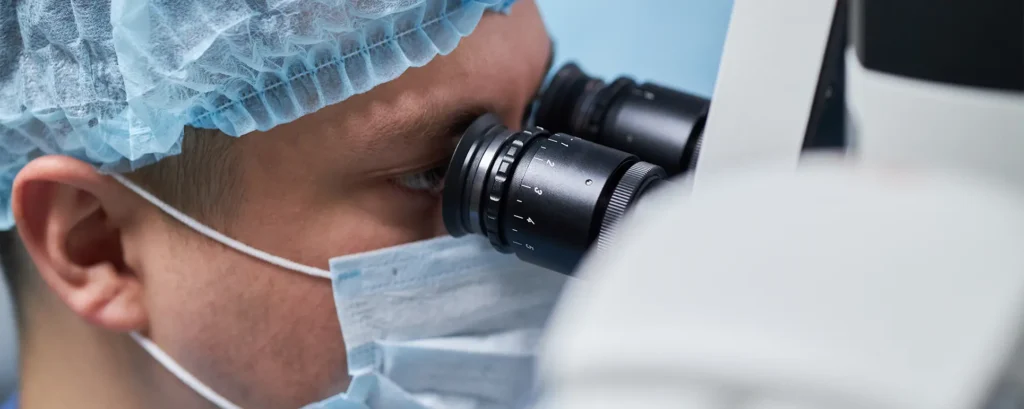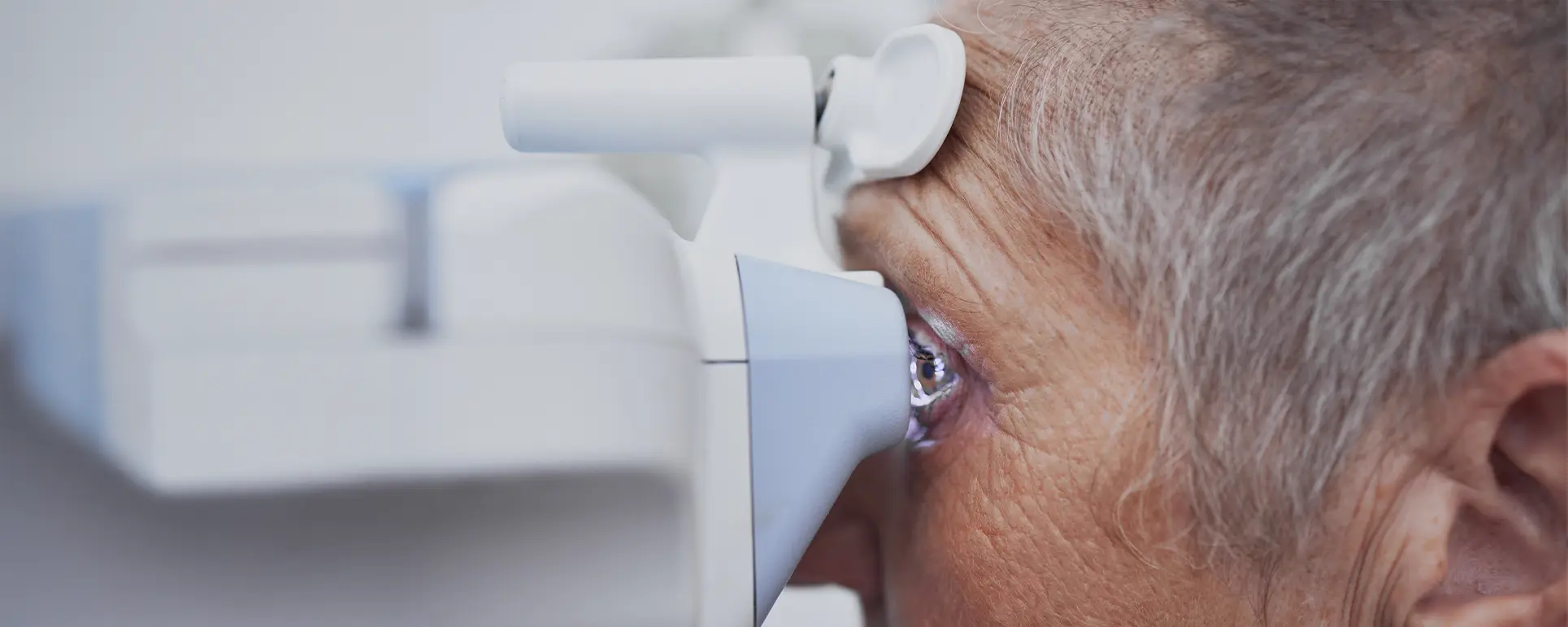When you are preparing for cataract surgery, you may be thinking mostly about removing the cloudy lens and getting your sight back. But if you also have astigmatism, the story is a little different. Standard lenses used in cataract surgery replace the cloudy lens, but they do not correct the irregular curve of the cornea that causes blurred vision. That means you could still need glasses for clear distance vision, even after successful surgery.
Toric intraocular lenses, or toric IOLs, are designed to solve this. They replace your cataract-damaged lens and also correct astigmatism in the same procedure. When positioned properly, they allow you to enjoy sharper distance vision without glasses. However, not all toric lenses are equal. Their performance depends on design, stability, and how well they stay aligned inside the eye after surgery.
In this article, I will guide you through the best toric lens brands available today. We will look closely at the Alcon AcrySof IQ Toric II, the Zeiss AT TORBI, and the Johnson & Johnson Tecnis Toric II, among others. You will learn what makes each option unique, what their strengths and weaknesses are, and what questions you might want to ask your surgeon before deciding.
What Makes a Good Toric Lens?

Not every toric lens is the same, and a few technical differences can make a big impact on your results. Here are the main things to keep in mind when comparing lenses.
Rotational Stability
A toric lens only works if it stays lined up with the axis of your astigmatism. If it rotates, even slightly, its corrective effect is reduced. Some designs are more prone to rotation than others, so manufacturers have developed features such as textured haptics or adhesive materials to help the lens stay stable.
Lens Material
Most of the leading toric lenses today are made of hydrophobic acrylic. This material has the advantage of sticking well to the capsule, reducing the chance of movement after surgery. It also tends to be long-lasting and less likely to lead to clouding behind the lens.
Optical Design
A toric lens should not only correct astigmatism but also give good contrast and minimise glare or halos. The way the optics are shaped, whether they are spherical or aspheric, influences how crisp your vision feels in different lighting conditions.
Range of Options
Patients have different levels of astigmatism. A good toric lens brand offers multiple cylinder powers so the surgeon can choose the right correction for you. The wider the range, the more flexibility there is in achieving the best result.
With these factors in mind, let us look at the main brands in detail.
Alcon AcrySof IQ Toric II
The AcrySof IQ Toric II is one of the most widely used toric lenses in the world and is often seen as a benchmark for stability and performance.
Design Features
The lens is made from hydrophobic acrylic, which naturally adheres to the capsule and helps prevent rotation. In the Toric II version, the haptics were redesigned with a frosted surface to increase friction. This makes the lens even more resistant to movement once it has been implanted.
The optic itself is aspheric, meaning it helps neutralise some of the natural imperfections of the cornea. This is intended to improve contrast sensitivity and give clearer vision, particularly in dim lighting.
Visual Results
Studies consistently show that the AcrySof toric lenses provide reliable correction of astigmatism and excellent uncorrected distance vision. Patients tend to report sharp, comfortable vision, with fewer issues related to glare and halos compared with older spherical designs.
Rotational Stability
One of the strengths of the AcrySof platform is its stability. Multiple studies have shown that the need for repositioning surgery is relatively low compared with other brands. This gives both surgeons and patients confidence that the lens will stay aligned over time.
Considerations
The AcrySof toric lenses cover a wide range of cylinder powers, but in very high astigmatism cases, availability may be more limited than with some competitors. The final outcome also depends on precise surgical alignment, so experience of the surgeon remains key.
Johnson & Johnson Tecnis Toric II
Johnson & Johnson’s Tecnis Toric II lenses are a strong competitor and are known for their optical quality and updated stability features.
Design Features
Like the Alcon lens, the Tecnis Toric II is made of hydrophobic acrylic. It has frosted haptics, which are designed to grip the capsule better than earlier versions. This was one of the major improvements compared with the first Tecnis toric models, which sometimes rotated more than surgeons would like.
The optics are fully aspheric and are specifically designed to neutralise corneal spherical aberration. This makes the lens especially attractive for patients who want crisp vision and strong contrast, even in lower light.
Visual Results
The Tecnis Toric II delivers excellent uncorrected distance vision and accurate astigmatism correction. Some surgeons feel that its optical quality is among the best available, particularly in terms of sharpness and reduced glare.
Rotational Stability
While earlier Tecnis toric lenses had a reputation for more rotation, the newer Toric II models have improved considerably. With the frosted haptic design, stability is now much closer to the level seen with Alcon lenses. Repositioning rates have dropped significantly, making it a reliable choice for most patients.
Considerations
The Tecnis platform has a wide range of toric options, giving flexibility for both low and higher astigmatism correction. However, results still depend on the surgeon’s alignment and the health of the capsule. Patients should also be aware that different surgeons may have personal preferences for either Alcon or Tecnis, based on their own experiences.
Zeiss AT TORBI
The Zeiss AT TORBI is another major option, often chosen in Europe. It uses a plate-haptic design, which sets it apart from the C-loop haptics used in Alcon and Tecnis lenses.
Design Features
The AT TORBI is made from hydrophilic acrylic with a hydrophobic surface. Its plate haptics are designed to provide a broad area of contact with the capsule, which helps stability. Some surgeons prefer this type of design, especially for eyes where rotation risk may be higher.
The optics are aspheric, giving good contrast and crisp vision across different lighting conditions.
Visual Results
The AT TORBI generally performs well in reducing residual astigmatism and providing sharp distance vision. Many patients report high satisfaction, and comparative studies show its effectiveness is broadly in line with Alcon and Tecnis.
Rotational Stability
The plate haptic design offers solid stability, though some studies suggest a slightly higher average rotation compared with AcrySof. However, the differences are small and often clinically insignificant. Most patients do not require repositioning after surgery.
Considerations
The AT TORBI may not be as widely available in all regions compared with Alcon and Tecnis. It also tends to be used more in European practices than in the UK or US.
Other Toric Lens Options
While Alcon, Johnson & Johnson, and Zeiss dominate the market, there are other toric lenses worth mentioning.
Hoya Vivinex Toric
This lens has been gaining attention for its excellent rotational stability and high patient satisfaction rates. Some surgeons report that its performance is very close to, if not better than, the AcrySof platform.
Bausch + Lomb enVista Toric
This lens is valued for its sharp optics and stability. Its material is designed to be glistenings-free, which may help maintain clarity over the long term.
Emerging Technologies
New toric multifocal and extended depth of focus (EDOF) designs are also being introduced, combining astigmatism correction with the ability to see clearly at multiple distances. These are generally considered “premium” options and may not be right for everyone, but they show how fast the field is evolving.
Comparing the Brands
When you look at the main players side by side, here is the overall picture:
- Alcon AcrySof Toric II – excellent stability, strong track record, widely available.
- Johnson & Johnson Tecnis Toric II – superb optical quality, much improved stability, wide range of options.
- Zeiss AT TORBI – solid performance, plate haptic design, popular in Europe.
- Hoya Vivinex Toric – impressive stability, newer but promising.
- Bausch + Lomb enVista Toric – glistening-free optics, good clarity.
The differences are not always dramatic, but they can matter. Stability, optical quality, and surgeon familiarity often guide the final choice.
FAQs About the Best Toric Lens Brands

1. How does the Alcon AcrySof IQ Toric II lens compare with other brands for stability?
The AcrySof IQ Toric II is often considered the gold standard for rotational stability. Its hydrophobic acrylic material and frosted haptic design help it “stick” to the capsular bag, reducing the likelihood of movement. Compared with other brands, repositioning rates are lower, which means patients are less likely to need further surgery to realign the lens.
2. What improvements were made in the Johnson & Johnson Tecnis Toric II compared with the original Tecnis Toric?
The original Tecnis Toric lenses sometimes rotated more than desired. The updated Toric II version introduced frosted haptics, giving the lens better grip and making it more stable. This change has brought its performance much closer to that of the Alcon platform, while retaining the Tecnis advantage of excellent contrast sensitivity and sharp optics.
3. Why do some surgeons prefer the Zeiss AT TORBI lens?
The Zeiss AT TORBI uses a plate-haptic design rather than the more common C-loop haptics. This design provides a broad area of contact inside the capsule, which some surgeons believe helps stability in certain eyes. It is also known for its crisp optical quality, though some studies suggest slightly more rotation on average compared with Alcon’s toric lenses.
4. Is there a difference in the optical quality of Alcon and Tecnis toric lenses?
Both Alcon and Tecnis toric lenses deliver excellent uncorrected distance vision. However, many surgeons note that the Tecnis platform has a slight edge when it comes to contrast sensitivity and clarity in low light. Alcon lenses, on the other hand, are widely praised for their combination of stability and consistent outcomes.
5. How does the Hoya Vivinex Toric lens perform compared with more established brands?
The Hoya Vivinex Toric is a newer entrant but has been gaining recognition for excellent rotational stability. Some comparative studies suggest it is on par with Alcon’s AcrySof platform, which is impressive given Alcon’s long track record. Its adoption is growing, particularly among surgeons looking for an alternative with very strong stability.
6. What is unique about the Bausch + Lomb enVista Toric lens?
The enVista Toric lens is designed to be glistening-free, meaning it avoids the small microvacuoles that can sometimes develop in hydrophobic acrylic lenses. This can help maintain long-term clarity. It also performs well in terms of stability, although it is not yet as widely used as Alcon or Tecnis lenses in many clinics.
7. Which brand offers the widest range of toric powers?
Johnson & Johnson’s Tecnis Toric platform is often noted for having a broad range of cylinder powers, allowing surgeons to treat both low and high levels of astigmatism. Alcon also offers a comprehensive range, though in some cases patients with very high astigmatism may find Tecnis gives slightly more flexibility.
8. Are Zeiss toric lenses as widely available as Alcon and Tecnis lenses?
In the UK and the US, Alcon and Johnson & Johnson are more widely implanted simply due to distribution and surgeon familiarity. Zeiss lenses, however, are very popular in parts of Europe, where the AT TORBI has a strong reputation. If you are considering Zeiss, it is worth checking with your clinic whether they use it routinely.
9. Which brand is easiest for surgeons to implant and align?
Surgeons often report that Alcon’s AcrySof Toric II is very straightforward to implant thanks to its injector system and predictable unfolding inside the eye. Tecnis Toric II is also relatively easy to handle, though individual surgeon preference plays a big role. Zeiss AT TORBI, with its plate-haptic design, can require slightly different handling techniques.
10. If a toric lens rotates, which brand is easiest to reposition?
In the rare cases where repositioning is needed, most surgeons find Alcon and Tecnis lenses easy to adjust, as their haptic designs allow controlled rotation. Plate-haptic lenses like the Zeiss AT TORBI can be a little trickier to manipulate, though experienced surgeons manage this without difficulty. The need for repositioning is uncommon overall, particularly with the newer generation lenses.
Final Thoughts
Choosing a toric lens is not about finding a single “best” brand, but about matching the right lens to your eyes, your lifestyle, and your surgeon’s expertise. Alcon, Johnson & Johnson, and Zeiss all produce excellent toric IOLs that can dramatically reduce your dependence on glasses. What matters most is having a detailed discussion with your surgeon about your astigmatism, your visual goals, and which lens they feel will give you the most predictable outcome.
Toric lenses have transformed cataract surgery for people with astigmatism. With the right choice, you can look forward to clearer, sharper vision, and in many cases, freedom from glasses for distance tasks.

